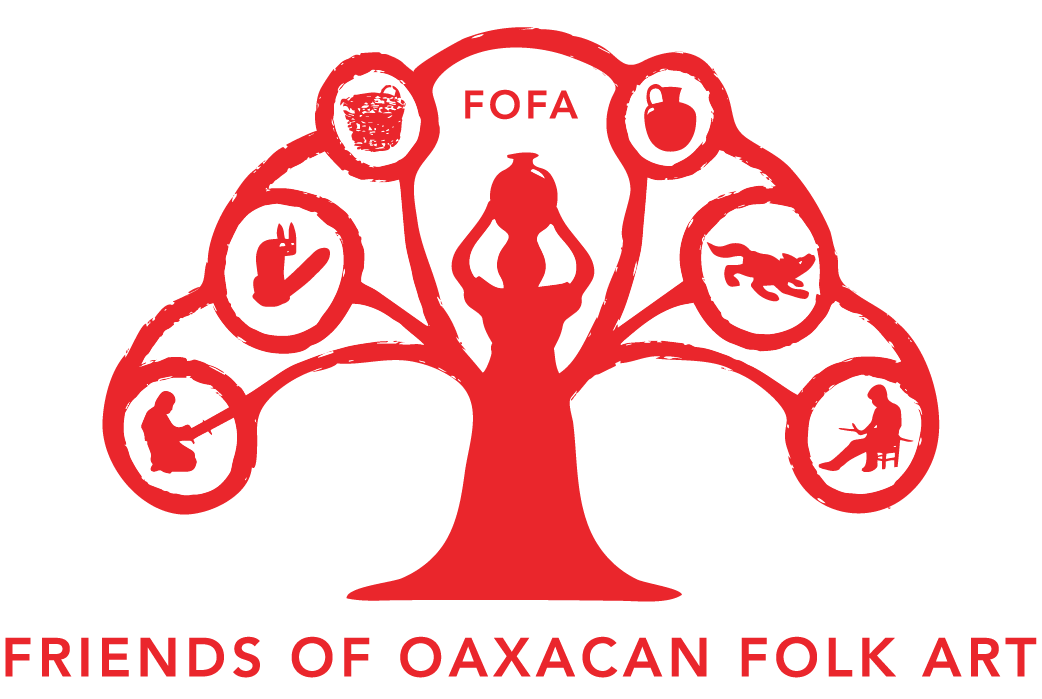MEET THE ARTISTS
METAL WORK
The ArtisTS
Oaxaca is known for two types of artistic metal work that are quite distinct from one another. One is decorative and functional pieces in tin. Another is knives and swords decorated with a remarkable array of materials.
TIN WORK (“Hoja de Lata”)
Tin work, or hoja de lata, dates back to the 16th century. It is primarily produced in the Xochimilco section of the city of Oaxaca. A wide variety of tin pieces for decorative and utilitarian use is created by the best artisans, some of which are decorated with bright colors in lacquer. Typical designs include holiday decorations, mirrors, lamps, trees of life, candleholders, and lanterns.
Miguel Ángel Aguero Pacheco
Xochimilco section of Oaxaca City
Santo Tomás #118
artesanias_miguel@hotmail.com
(From US) Cell: 011-52-951-182-8368 and 011-52-951-165-3057
(In Oaxaca) Cell: 951-182-8368 and 951-165-3057
Miguel, a poetic and thoughtful man, creates expressive tin pieces in his home workshop in the Xochimilco section of the city of Oaxaca. Miguel works with several of his sons and a son-in-law to make special pieces such as trees of life, lamps, and skeletons engaged in human activities, the latter in honor of the Day of the Dead. With intense emotion, Miguel related his belief that “only art and music express the soul.”
Tomás Ricardo Santiago Pacheco
Xochimilco section of Oaxaca City
Rio Pedregal #211
Colonia la Cascada
ricardosantiago6@yahoo.com.mx
(From US) Landline: 011-52-951-390-1375
Cell: 011-52-951-169-6950
(In Oaxaca) Landline: 390-1375
Cell: 951-169-6950
Son of Alfonso Santiago Leyva, master craftsman in hoja de lata who no longer works in this modality, Tomás continues in his tradition. Alfonso was one of the first artists to decorate tin pieces with assorted colors. Tomás produces a wide array of designs, although soldiers, candlabras and mirrors in the shape of stars are among those he considers most significant. Another is a type of mirror with filigree border introduced decades ago.
Victor Ruben Hernández Leyva
Xochimilco section of Oaxaca City
Rio Pedregal #112
Colonia la Cascada
hojalartes@live.com.mx
(From US) Cell: 011-52-951-124-5141
(In Oaxaca) Cell: 951-124-5141
Victor creates a wide variety of tin objects of excellent quality, including boxes in pure tin or with glass inlay, ornate mirrors, soldiers, Christmas ornaments and animals. He began to work at 10 years of age, initially taught by his older cousin, Alfonso Santiago Leyva (father of Tomás Santiago, immediately above), until he opened his own business in which his son participates as well.
Julio Manuel Rios Ventura
[Honorable mention in “Other modalities,” FOFA’s 2018 contest]
Oaxaca City
Calzada del Panteón #907, San Felipe del Agua
juliomanuelriosventura@outlook.com
(From US) Landline: 011-52-951-520-2165
Cell: 011-52-951-593-6766
(In Oaxaca) Landline: 520-2165
Cell: 951-593-6766
As a young boy, Julio’s father taught him to work in tin. He regards himself as the last generation to preserve this traditional craft, made entirely by hand without the use of machinery. He also wishes to honor the potters of San Bartolo Coyotepec whose black ceramic art he loves. Julio’s shiny tin piece captures the brilliance of black ceramic pots. He created two pots in the old style, one that is shiny and the other with openwork decoration, to which he added the strong weathered hands of local artisans. He believes the strength of his town is embodied in the strong hands of its male and female laborers.
CUTLERY AND SWORDS
(Ocotlán de Morelos and Oaxaca City)
The production of cutlery and swords is far more than a utilitarian endeavor. It represents a blend of artistry and an appreciation of historical tradition. Techniques date back to the Spanish conquest of Mexico, when weapons and knives were important. Today there are several families, primarily in Ocotlán de Morelos (the pueblo also known for its painted red ceramics) and in Oaxaca City, whose outstanding work has been transmitted for many generations. Knives can also be purchased in some folk art shops in Oaxaca City, as well as in many of Oaxaca’s public markets. In addition to swords and machetes, artisans also create knives for hunting and fishing, kitchenware and other domestic utensils (letter openers, cake servers and the like). These may be elaborately decorated and protected in tooled leather cases.
Apolinar Aguilar Velasco
Pueblo of Ocotlán de Morelos
Callejon Victoria s/n
cuchilleriaart@hotmail.com
Facebook: cuchilleriaangelaguilar
(From US) Landline: 011-52-951-571-0784
Cell: 011-52-951-192-8018
(In Oaxaca) Landline: 571-0784
Cell: 951-192-8018
Apolinar creates museum quality cutlery and swords that also serve utilitarian purposes. He prides himself on making replicas of antique knives and swords seen in museum quality photography books, rather than the more commercial pieces produced in the many knife workshops found in the city of Oaxaca. Apolinar’s pieces range from kitchenware (place settings, cooking and carving utensils), to knives for camping and fishing, and swords for martial arts, film and bullfights. Some serve multiple functions such as cutting food and opening bottles. His reproductions of medieval swords are particularly spectacular and fascinating.










